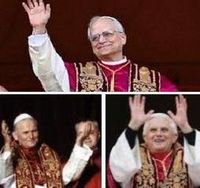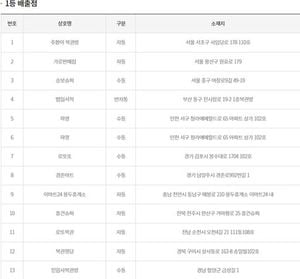On May 8, 2025, the Catholic Church welcomed a new leader as Cardinal Robert Francis Prevost was elected Pope Leone XIV. This significant event marked a notable moment in the Vatican, drawing attention not only for the election itself but also for the traditions and symbolism surrounding it.
After his election, Pope Leone XIV made a striking appearance from the Loggia of Saint Peter, donning a stole that had previously been worn by two of his predecessors—Pope John Paul II, born Karol Wojtyla, and Pope Benedict XVI, born Joseph Ratzinger. This choice of attire was particularly noteworthy as it contrasted sharply with the approach taken by the recent former pope, Francis, who had chosen to appear without any traditional vestments, simply wearing a white robe.
The new pope's decision to wear the stole, along with a short red cape known as a mozzetta and a lace-embroidered surplice called a rocchetto, reflects a return to traditional papal attire. This choice is seen as a deliberate departure from Pope Francis's more minimalist style, which emphasized simplicity and humility. When Francis was elected, he famously presented himself in a plain white robe, adorned only with a silver crucifix, an image that resonated with many who appreciated his focus on modesty.
By opting for the full ceremonial garb, Leone XIV seems to be signaling a shift back to more traditional practices within the papacy. This move has sparked discussions among theologians and churchgoers alike, who are interpreting it as a potential indicator of the new pope's priorities and approach to leadership.
In his first address as pope, Leone XIV expressed gratitude for the trust placed in him by the cardinals and emphasized his commitment to guiding the church through contemporary challenges while remaining anchored in its rich traditions. His selection as pope has been met with widespread interest, not only because of his attire but also due to his background as a cardinal from the United States, which is a significant factor in the church's global landscape.
The choice of attire is steeped in symbolism. The stole represents the authority of the papacy, while the mozzetta and rocchetto add layers of historical significance, connecting the new pope with his predecessors. This connection is particularly poignant given the legacy of both John Paul II and Benedict XVI, who each had profound impacts on the church during their respective tenures.
Leone XIV's election comes at a time when the Catholic Church faces numerous challenges, from addressing issues of clerical abuse to navigating the complexities of modern society. Observers note that the new pope's traditional presentation may resonate with those who long for a reaffirmation of the church's longstanding customs and teachings.
As Leone XIV steps into his role, he carries with him the hopes and expectations of millions of Catholics around the world. His leadership style and decisions in the coming months will be closely watched as he seeks to balance tradition with the pressing needs of the contemporary church.
The reaction to his election and his choice of attire has been mixed, with some praising his return to tradition, while others argue that the church must continue to adapt to modern times. This debate highlights the ongoing tension within the church between maintaining its historical identity and responding to the evolving needs of its followers.
In conclusion, Pope Leone XIV's election and his symbolic choice of attire mark a significant moment in the history of the Catholic Church. As he embarks on this new journey, the world watches to see how he will navigate the complexities of leading a global faith community rooted in tradition while facing the realities of the 21st century.





